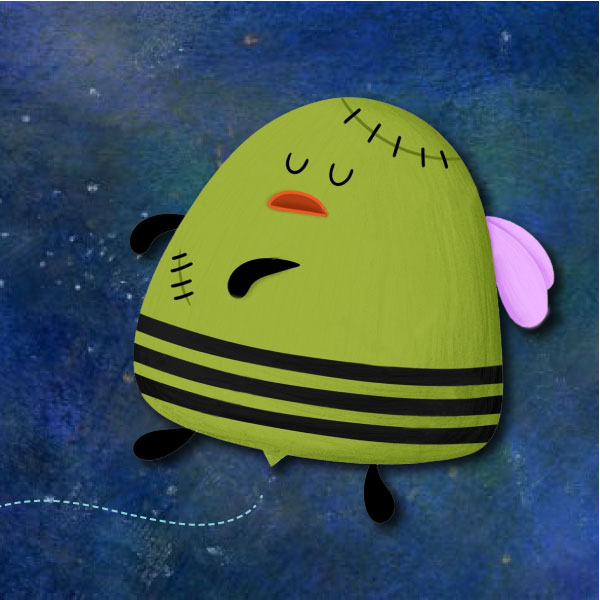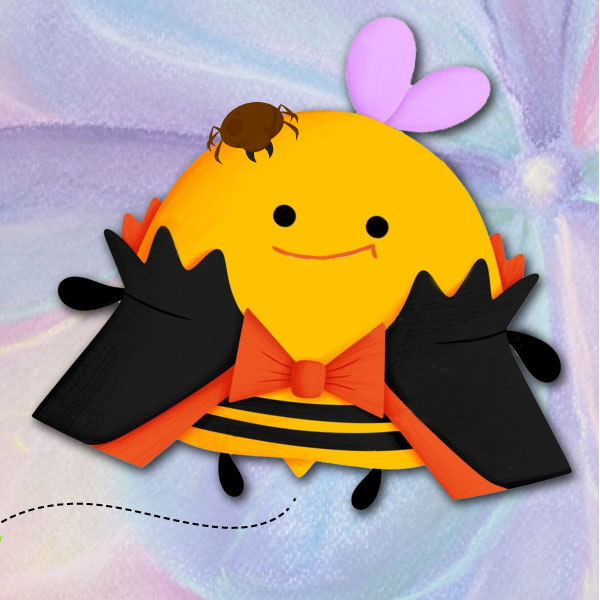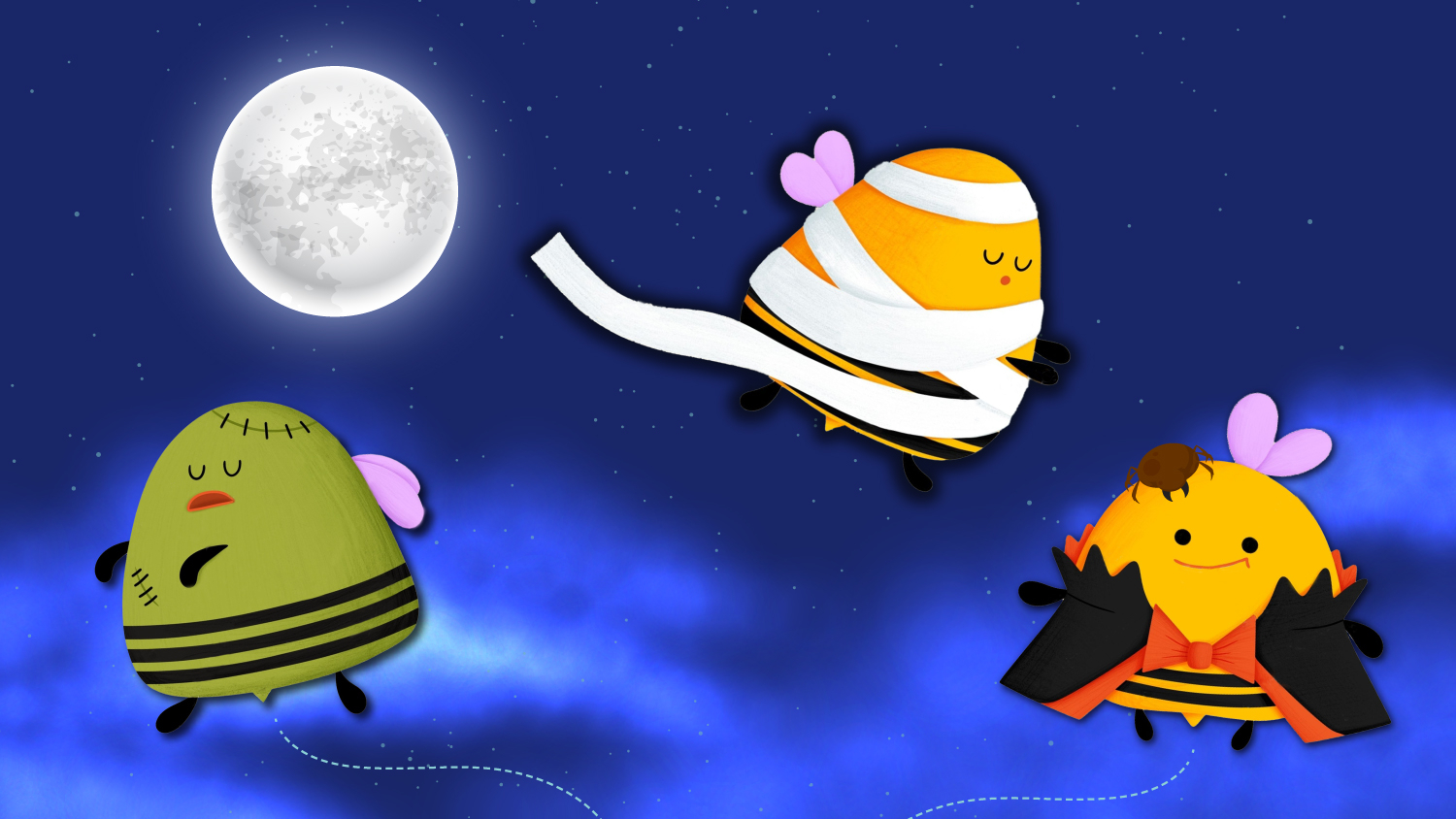Zombeeland

The honey bee flies at night.
It appears lost, confused, mindlessly moving toward the light. Inside its fuzzy body, a parasitic fly larva has hatched and taken control.
The honey bee dies alone, perhaps at the base of a street lamp, giving the larva time to finish its development. The fly feeds on its host from within, then POP! A fly emerges from the zom-bee’s skull, in search of its next victim.
Phorid flies parasitize other insects and have specialized tastes for grasshoppers or ants or bumble bees. The phorid flies that zombify honey bees by making them fly at night are host manipulators. They typically change their host’s behavior to escape and spread.
“As in similar systems like ant colonies, getting out of the hive system, out of that colony, is important for the phorid fly’s survival. You can anthropomorphize a bit: if you’re a bee and the bee next to you has its head pop off and a fly comes out, there’s going to be some reaction of the hive against the fly,” says Brad Metz, research associate in the Tarpy Lab at NC State University.
Though fit for a horror movie, zom-bees don’t seem to pose a significant threat to honey bees and their keepers. For now, zom-bees are more of a curiosity than an apocalypse.
The Mummy: Tomb of the Honey Bee

In honey bee hives across the country, a deadly fungus lies in wait, dormant until the conditions are just right.
But then something happens. The colony weakens when its temperature drops. A damp chill takes hold of the hive. The fungus is awakened and spreads, slowly turning honey bee larvae into mummies, one by one.
“When the bee larvae die, they are dehydrated into hard white, fuzzy nodules that look like something wrapped up in tissue, like a mummy,” Metz says. “Alternatively, they kind of look like little pieces of chalk, which is where the fungus gets the name chalkbrood.”
Chalkbrood is a stress disease, explains David Tarpy, Extension apiculturist and professor in the Department of Applied Ecology. He says honey bee colonies keep their nests around 95 degrees Fahrenheit, so if the temperature drops into the 80s, the fungi will spread and threaten the developing brood.
Mummified bees aren’t a major issue for beekeepers in the Southeast, where conditions are warm. But further north, where an unspeakable chill lies on the doorstep, hives become tombs, encasing the mummy broods within.
Apis’s Lot

A vampire lurks beneath the petal of a flower. It is small, but not so small that it can’t be seen by the likes of you and me. Its round reddish-brown body and eight frontal legs look like a miniature tailless horseshoe crab.
An unsuspecting honey bee visits the flower for a snack, or perhaps a midafternoon nap, when the vampire mite leaps onto its back. The mite latches onto the neck of the honey bee and begins sucking its blood.* Once the bee is back in its hive, the mite detaches from the adult and starts feeding on larvae as a parasite. The larvae survive, but grow into stunted, often wingless creatures. If victims do grow wings, they are gnarled, ghastly, useless things.
Without the ability to fly, the deformed honey bee eventually dies, the colony not far behind. Any remaining survivors abandon their hive and drift to one nearby, carrying the mites with them. Other colonies move into the abandoned hive, where the vampires await their next brood breakfast.
These vampiric foes of the honey bee, called varroa mites, have been a scourge to U.S. honey bee colonies since 1986 when they underwent a host shift from Asian honey bees to western honey bees. The western honey bee is non-native to the U.S. and has no natural immunity to varroa mites.
“You can think of these little vampire mites as dirty hypodermic syringe needles.
Some honey bee breeding efforts are investigating morphological traits that could increase the jaw size or biting ability of western honey bees to help them fend off the vampires like their Asian cousins. Other breeding efforts focus on behavioral changes that would make honey bees even more vigilant and hygienic by detecting mites sooner and chucking parasitized pupae out of the hive before the mites can spread.
“Recent research suggests that varroa mites don’t kill the bees, but that they’re actually vectoring viral pathogens that kill the bees. You can think of these little vampire mites as dirty hypodermic syringe needles,” Tarpy says.
Tarpy and his team have been researching the viruses being transmitted by varroa mites. Metz says that the deformed wings, a calling card for the presence of varroa mites, are actually caused by the deformed wing virus.
“I tell beekeepers that there are two types of honey bee colonies: those with varroa mites and those that will have varroa mites,” Tarpy says.
Get your garlic ready, beekeepers — the vampires are coming.
*Bees don’t technically have blood as we humans know it. Hemolymph is the official term to describe a bee’s blood-like fluid that contains and transports vital nutrients throughout the body and removes waste. Or, you could use Tarpy’s unofficial term, “life juices.”
This post was originally published in College of Agriculture and Life Sciences News.



